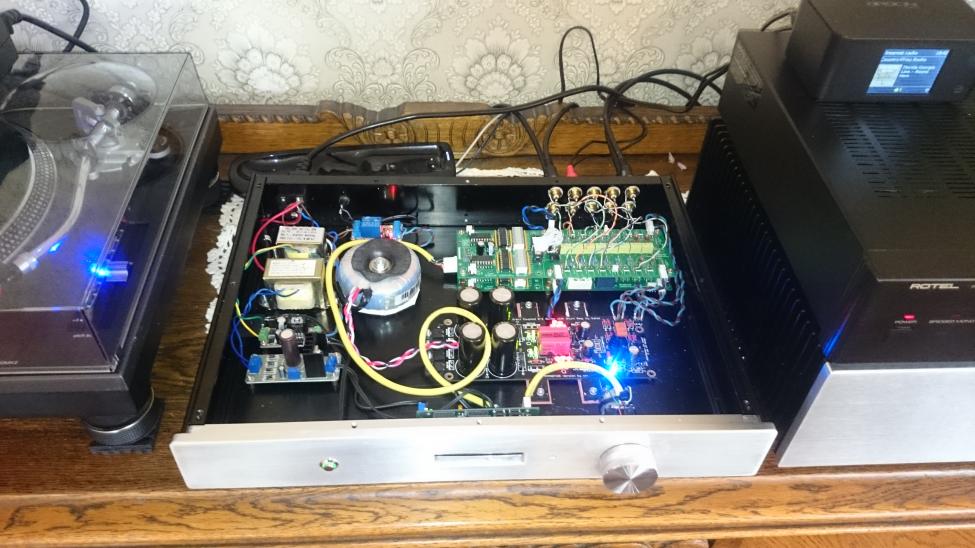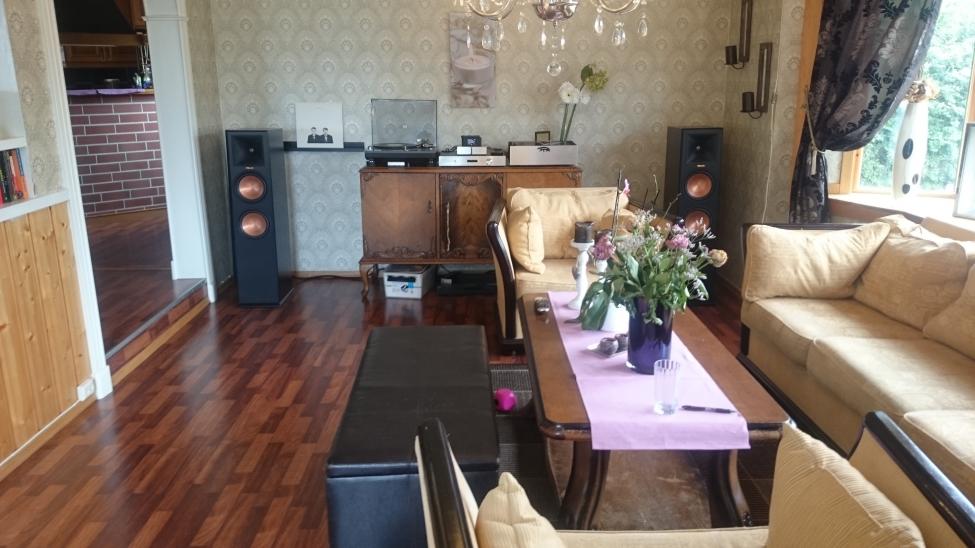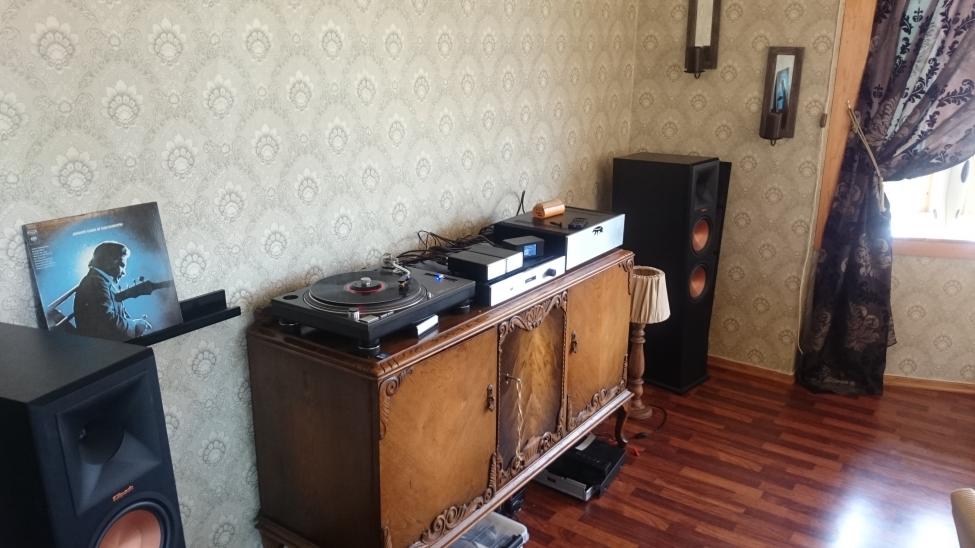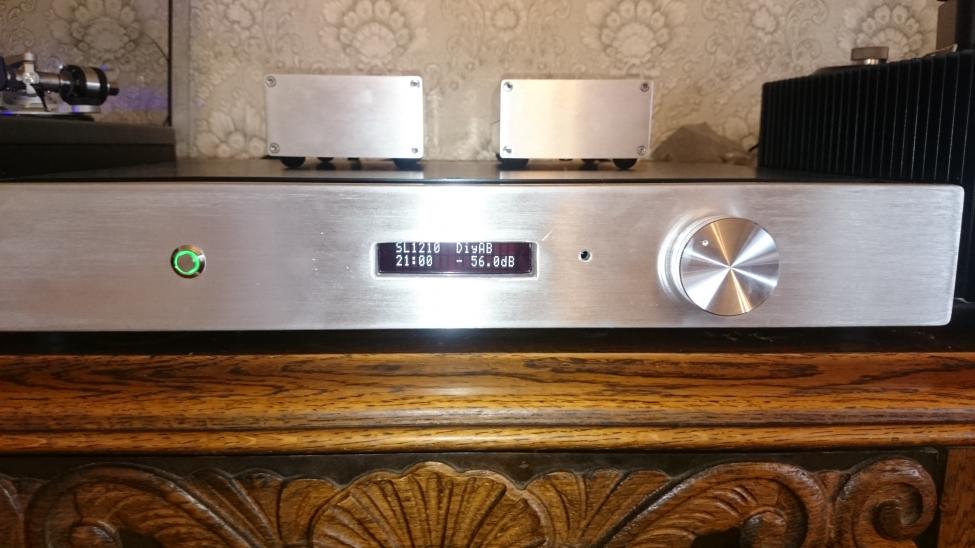No, you should not remove/change those resistors.I'm considering to use LDR as volume control before the B1 buffer, in this case should I remove/change the first two resistors (220/220K) of the buffer? I'm asking just because I'd like to make it as easier as possible. My idea is to have the "audio stage" (LDR+B1+input selector) on one board and the PSU (including a 12V and 5V output) on another board.
ThanksNo, you should not remove/change those resistors.
The LED/LDR can be mounted on the DCB1 PCB.
The 5V supply can be tapped off the 12V regulator, or straight from the unregulated capacitors.
The vol pot can be located on the front panel and the long wires carrying DC can be taken to the remote DCB1. Since they are DC wires they cannot emit interference. If you have a cap across the LEDs, then any small amount of interference picked up by the long twisted pairs of DC wires will be attenuated at the load.
The DCB1 resistors do not need to be changed. They were selected to suit a normal vol pot and will work with the LDR style vol pot.
The 5V supply can be tapped off the 12V regulator, or straight from the unregulated capacitors.
The vol pot can be located on the front panel and the long wires carrying DC can be taken to the remote DCB1. Since they are DC wires they cannot emit interference. If you have a cap across the LEDs, then any small amount of interference picked up by the long twisted pairs of DC wires will be attenuated at the load.
The DCB1 resistors do not need to be changed. They were selected to suit a normal vol pot and will work with the LDR style vol pot.
Built my DCB1 with 10 ohm resistors.
The mosfets are cool to touch when bolted to the chassis. The chassis is not ventilated and don't have any heat sinking (except for some small fins on the side panels). Can this work with the 3.3ohm resistors or will it get too hot?

(Please ignore the long cat5 cable between lcduino and d1/2 stack. I have been to lazy to shorten it yet.)
The mosfets are cool to touch when bolted to the chassis. The chassis is not ventilated and don't have any heat sinking (except for some small fins on the side panels). Can this work with the 3.3ohm resistors or will it get too hot?

(Please ignore the long cat5 cable between lcduino and d1/2 stack. I have been to lazy to shorten it yet.)
Last edited:
An externally hosted image should be here but it was not working when we last tested it.
An externally hosted image should be here but it was not working when we last tested it.
An externally hosted image should be here but it was not working when we last tested it.
Turntable: Project Debut Carbon Esprit + Ortofon 2M Blue
Headphone amp: Jonokuchi
DAC: 1794 NOS (Raspberry direct I2s + Wave IO)
Preamp: DCB1 + LCDUINO
Amp: For now Zenquito (Working on a F5)
Speakers: Quadral Montan MK3
Not always. Certainly not for your setting choice. More current boosts the MOSFETS transconductance. A DCB1 will be satisfactory in low current setting for its supplies. Most users steadily report for enough years now that they appreciate it better in Hot-Rod mode though.Is it always recommended to bolt the 4 mosfet to the chassis?
I'm going to use two 68Ohm in parallel (34Ohm) because it was not so clear to me what is the real meaning in changing the current here.
Nice builds guys, the Touister's is more of a looker too. In what kind of systems you play them in?
@yngvejos
With that kind of easy thermal results and a box as sink I would suggest 4.7R 10W for Hot-Rod
Tnx
I'm running a At150mlx on a technics sl1210 through Audiokarma Cnc phono stage through Lcduino selector/attenuator, dcb1, Honey Badger amp and Klipsch rp280f.



I will try 3.3 ohms first as I don't have any 4.7 ohms available. If it overheats I'll put back the 10 ohms and put 4.7ohms on my next order.
Last edited:
Nice classic surroundings, loud long throw system. Correct choice to use horn speaker for that positioning. I also like your cartridge model. Congratulations.
Remember to measure Vdrop across each side 3R3. Non matched MOSFETS of opposite doping especially at higher current can show enough VGS difference. That projects on the resistors voltage drop exclusively provided the LEDS are matched. If those voltage drops on the setting resistors are more than 10% different you might consider a higher Ohmic value for the higher drop side while leaving the other Ohmic value at 3R3. So the dissipation will be even on both sides. CCS current per side is I=Vrset/rset.
Remember to measure Vdrop across each side 3R3. Non matched MOSFETS of opposite doping especially at higher current can show enough VGS difference. That projects on the resistors voltage drop exclusively provided the LEDS are matched. If those voltage drops on the setting resistors are more than 10% different you might consider a higher Ohmic value for the higher drop side while leaving the other Ohmic value at 3R3. So the dissipation will be even on both sides. CCS current per side is I=Vrset/rset.
Cool looking uniform rack system. Congrats. What circuit in the phono box? FSP I think. Going to make a similar faceplate for the new power amp also?
Yes FSP
I am looking for such design for the F5 front panel:
https://passlabs.com/images/uploads/Header_banner/amps_xa30.5_front.jpg
Spent the whole day looking for the 3.3r resistors but could not find them. :-/ I ended up putting in two 10r resistors in parallel to get 5 ohms. Im not sure if I hear any difference or not. The fets runs 10c above ambient so I think it should handle more current without issues. ;-)
Vdrop over the resistors are 2.013v and 2.138v. Does that mean I'm running around 400mA? Can I expect much difference in the sound going to 600mA?
Vdrop over the resistors are 2.013v and 2.138v. Does that mean I'm running around 400mA? Can I expect much difference in the sound going to 600mA?
Yes, you run circa 400mA now and they are close enough per side. Some said while they surely prefer the 200mA mark over the basic 34 Ohm ~ 65mA non sinked mode they can't hear an improvement above the 200mA mark. Some others raved every +400mA jump. Depends on how close you hear and on room acoustics I think. Headphones are more revealing. In any case you got thermal headroom it seems to push it and decide what is enough for you in your own system.
Yes, I really like this design.
I sent my files to modushop.biz and they do it.
Alright. Another thing now. Zenquito has maybe double the voltage gain vs F5? Watch the system voltage gain to be enough when using a buffer. Has to do a lot with the loudspeakers sensitivity and the room size also. If now its too loud at max then maybe you can sacrifice some total gain. If its just as loud as you wish it may sound anemic with less voltage gain in the power amp. I favor Aleph J a bit better than F5 for some unknown technical reason btw. It just strikes me as having a fleshier more earthy tone.
Alright. Another thing now. Zenquito has maybe double the voltage gain vs F5? Watch the system voltage gain to be enough when using a buffer. Has to do a lot with the loudspeakers sensitivity and the room size also. If now its too loud at max then maybe you can sacrifice some total gain. If its just as loud as you wish it may sound anemic with less voltage gain in the power amp. I favor Aleph J a bit better than F5 for some unknown technical reason btw. It just strikes me as having a fleshier more earthy tone.
Thank you for your concern.
I kind of thought about it. The idea is to try to reduce as much as possible the attenuation in "normal" listening condition.
The Zenquito got a gain of about 35dB.
I am building a F5 with a gain of 21dB.
For now it will hopefully be okay.
- Home
- Source & Line
- Analog Line Level
- Salas hotrodded blue DCB1 build